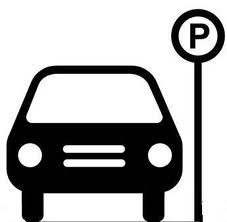New York Times Opinion Page March 26, 2012
When a Parking Lot Is So Much More
By Eron Ben-Joseph
Cambridge, Mass.
No one loves a parking lot. In her song “Big Yellow Taxi,” Joni Mitchell laments, “They paved paradise and put up a parking lot.” The parking lot is the antithesis of nature’s fields and forests, an ugly reminder of the costs of our automobile-oriented society. But as long as we prefer to get around by car (whether powered by fossil fuel, solar energy or hydrogen), the parking lot is here to stay. It’s hard to imagine an alternative.
Or is it? I believe that the modern surface parking lot is ripe for transformation. Few of us spend much time thinking about parking beyond availability and convenience. But parking lots are, in fact, much more than spots to temporarily store cars: they are public spaces that have major impacts on the design of our cities and suburbs, on the natural environment and on the rhythms of daily life. We need to redefine what we mean by “parking lot” to include something that not only allows a driver to park his car, but also offers a variety of other public uses, mitigates its effect on the environment and gives greater consideration to aesthetics and architectural context.
It’s estimated that there are three nonresidential parking spaces for every car in the United States. That adds up to almost 800 million parking spaces, covering about 4,360 square miles — an area larger than Puerto Rico. In some cities, like Orlando and Los Angeles, parking lots are estimated to cover at least one-third of the land area, making them one of the most salient landscape features of the built world.
Such coverage comes with environmental costs. The large, impervious surfaces of parking lots increase storm-water runoff, which damages watersheds. The exposed pavement increases the heat-island effect, by which urban regions are made warmer than surrounding rural areas. Since cars are immobile 95 percent of the time, you could plausibly argue that a Prius and a Hummer have much the same environmental impact: both occupy the same 9-by-18-foot rectangle of paved space.
A better parking lot might be covered with solar canopies so that it could produce energy while lowering heat. Or perhaps it would be surfaced with a permeable material like porous asphalt and planted with trees in rows like an apple orchard, so that it could sequester carbon and clean contaminated runoff.
The ubiquity of parking lots has also led to an overlooked social dimension: In the United States, parking lots may be the most regularly used outdoor space. They are public places that people interact with and use on a daily basis, whether working, shopping, running errands, eating, even walking — parking lots are one of the few places where cars and pedestrians coexist.
Better parking lots would embrace and expand this role. Already, many lots provide space for farmers’ markets, spontaneous games of street hockey, tailgating, even teenagers’ illicit nighttime parties. This range of activities suggests that parking lots are a “found” place: they satisfy needs that are not yet met by our designed surroundings. Planned with greater intent, parking lots could actually become significant public spaces, contributing as much to their communities as great boulevards, parks or plazas. For instance, the Italian architect Renzo Piano, when redesigning the Fiat Lingotto factory in Turin, eliminated the parking lot’s islands and curbs and planted rows of trees in a dense grid, creating an open, level space under a soft canopy of foliage that welcomes pedestrians as naturally as it does cars.
The parking lot also has an underutilized architectural function. A parking lot is the first part of a space you visit or live next to. It is typically the gateway through which dwellers, customers, visitors or employees pass before they enter a building. Architects and designers often discuss the importance of “the approach” as establishing the tone for a place, as the setting for the architecture itself. Developers talk about the importance of “first impressions” to the overall atmosphere conveyed to the user.
Yet parking lots are rarely designed with this function in mind. When they are, the effect is stunning. For instance, the parking lot at the Dia art museum in Beacon, N.Y., created by the artist Robert Irwin and the architecture firm OpenOffice, was planned as an integral element of the visitor’s arrival experience, with an aesthetically deft progression from the entry road to the parking lot to an allée that leads to the museum’s lobby.
For something that occupies such a vast amount of land and is used on a daily basis by so many people, the parking lot should receive more attention than it has. We need to ask: what can a parking lot be?
Eran Ben-Joseph, a professor of urban planning at the Massachusetts Institute of Technology, is the author of “Rethinking a Lot: The Design and Culture of Parking.”
"It’s estimated that there are three nonresidential parking spaces for every car in the United States. That adds up to almost 800 million parking spaces, covering about 4,360 square miles. In some cities, like Orlando and Los Angeles, parking lots are estimated to cover at least one-third of the land area, making them one of the most salient landscape features of the built world."
Citizens Taking Action for public transit
www.CTAriders.org
"Cars are immobile 95% of the time"

